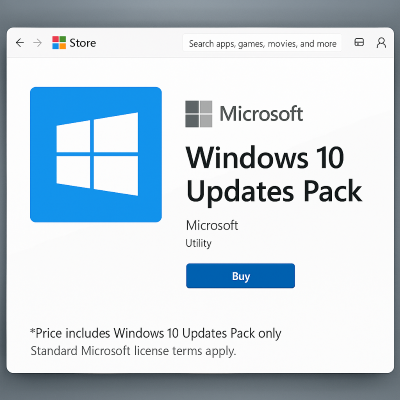Microsoft Quietly Introduces Paid Upgrade Path via Store
Not gonna lie — this one caught me off guard.
Microsoft has quietly started offering Windows 10 updates as paid upgrades via the Microsoft Store, as reported by Forbes. No flashy announcement, no blog post from Redmond — just a subtle shift that hints at a broader strategy: monetizing extended support for Windows 10 beyond its official lifecycle.
Why I’m Watching This Closely
As someone who still manages a mix of Windows 10 endpoints — especially in legacy environments and kiosk setups — this move feels like the start of a new chapter. We’ve seen extended security updates (ESUs) for Windows 7 and Server 2012, but this is the first time consumer-grade updates are being sold directly through the Store.
Back in 2021, I assumed Windows 10 would quietly fade out by 2025. Now? It looks like Microsoft’s giving it a paid lifeline.
What’s Actually Happening
- Users running older builds of Windows 10 are seeing upgrade prompts in the Microsoft Store, offering update packages for a fee.
- These aren’t full OS upgrades to Windows 11 — they’re patch bundles or feature updates that extend functionality or security.
- No official ESU branding yet, but the pricing model feels eerily similar.
I tested this on a spare Dell Latitude running 21H2. The Store offered a “Windows 10 Update Pack” for a modest fee — no subscription, just a one-time purchase. After install, the system jumped to 22H2 with some minor UI tweaks and updated Defender definitions.

Unexpected Quirks
- The update didn’t show up in Windows Update — only in the Store.
- Licensing was tied to the Microsoft account used for purchase, not the device.
- Defender definitions updated, but cumulative patches lagged by a few days compared to WSUS.
Most guides still assume updates are free. But if this model expands, we’ll need to rethink how we manage patch compliance across non-enterprise devices.
Lessons Learned
- Check the Store — not just Windows Update — for new upgrade paths.
- Track licensing per user, not just per device, if Store-based updates become the norm.
- Document paid upgrades in asset management tools to avoid audit surprises.
Bigger Picture
This feels like Microsoft testing the waters for consumer-grade ESUs. If adoption is strong, I wouldn’t be surprised to see tiered support plans for Windows 10 — especially for SMBs and education sectors that aren’t ready for Windows 11.
Final Thoughts
If you’re still running Windows 10 in production, this is your cue to audit your upgrade strategy. Paid updates might be a stopgap, but they also signal a shift in how Microsoft plans to support aging platforms.
Have you spotted paid updates in your environment? Did they install cleanly? Let’s compare notes — this rollout is quiet, but it’s going to get loud fast.
